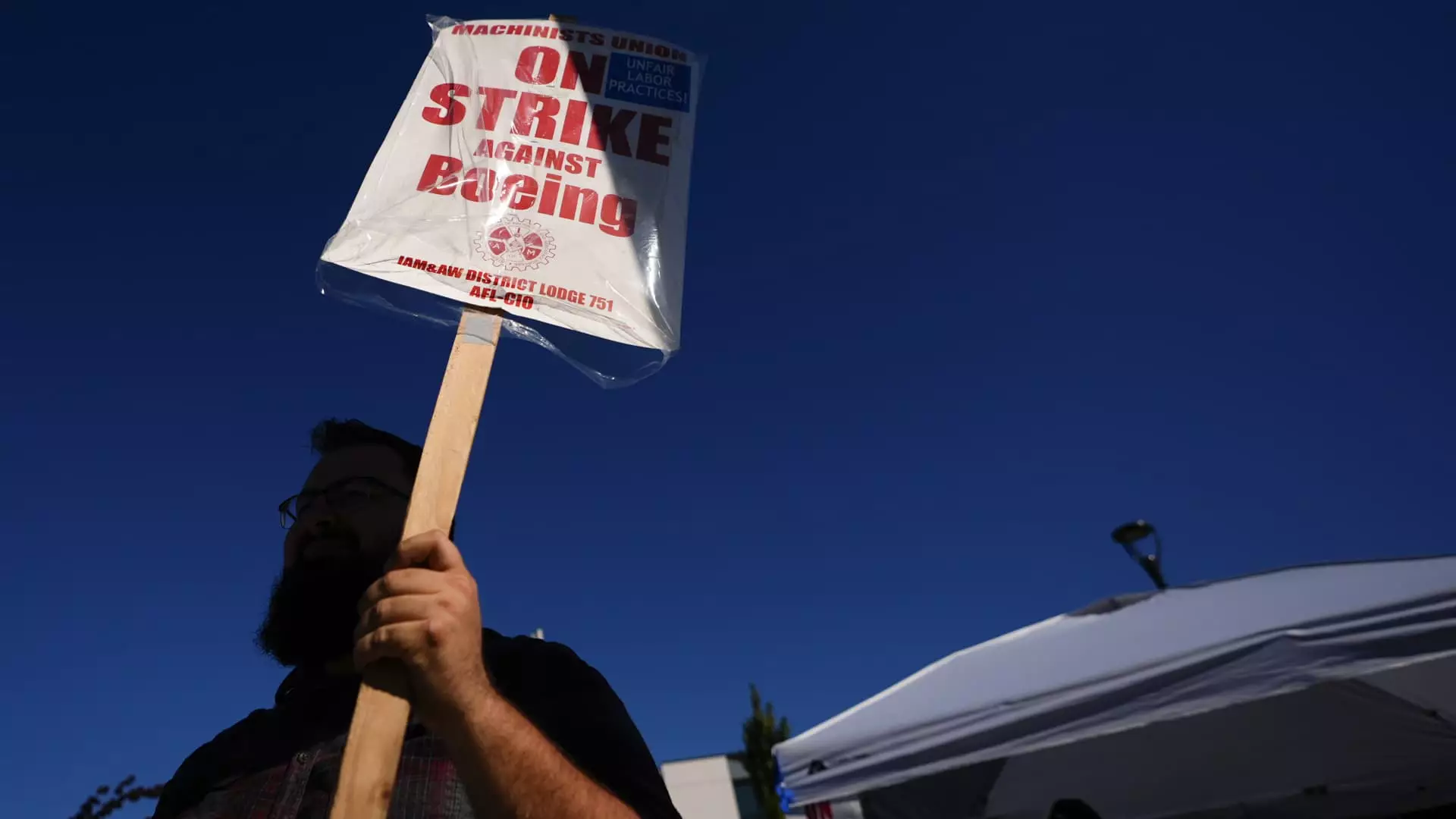The aerospace giant Boeing is grappling with unprecedented challenges as one of the most significant strikes in its history unfolds. With over 30,000 machinists walking off the job about a month ago after rejecting a tentative contract, the fallout has been felt across the entire operation and its broader economic environment. This situation places considerable pressure on newly appointed CEO Kelly Ortberg, who was expected to steer the company out of a troubled phase marked by safety issues, production delays, and financial losses.
The strike, described by S&P Global Ratings as costing Boeing upwards of $1 billion monthly, highlights the gravity of the issue. It occurs against a backdrop of severe operational challenges, including a year plagued by safety incidents such as the blowout of a 737 Max door plug and the ongoing repercussions of two fatal crashes six years ago that devastated the company’s reputation. Production halts in facilities spread across Seattle and beyond have not only shelved aircraft delivery timelines but have also created a ripple effect impacting the company’s cash flow.
Boeing’s efforts to negotiate a resolution have proven futile thus far. The company made attempts to present an improved contract offer, which was ultimately withdrawn, indicating a breakdown in relations. The union, the International Association of Machinists and Aerospace Workers, has demonstrated a united front, with workers decisively rejecting the initial proposal by a staggering 95%. As Harry Katz, a labor relations expert, articulates, the striking workforce is adamant that Boeing will need to present an improved offer to resume production.
As the impasse continues, striking machinists are seeing their livelihoods affected. With the expiration of their health coverage at the end of September, they face significant uncertainty. In contrast to the 2008 strike, however, many workers in the region now have alternative employment opportunities in contract work, which may alleviate some immediate financial burdens. The union has even created forums to share job opportunities outside Boeing, including services in food delivery and warehousing, which highlight a community effort to support one another through the strike’s fallout.
Boeing’s recent announcement of a workforce reduction by approximately 10% only adds to the strain. This move, which includes cuts among executives and managerial staff, may reflect an underlying strategy to stabilize the company’s finances amid mounting losses projected to reach nearly $10 a share for the third quarter. These financial issues stem primarily from production delays and a projection of a $5 billion write-off across both commercial and defense sectors.
Ortberg’s leadership comes at a time when Boeing desperately needs effective navigation of a financial storm compounded by operational missteps. Investors will be looking closely at the company’s October earnings call as it may provide greater clarity on future strategies. Analysts like Richard Aboulafia argue that the path to financial recovery is contingent on stabilizing the production of the 737 Max, which remains a cornerstone of Boeing’s aircraft lineup. Unfortunately, current worker dissatisfaction complicates this goal, indicating reluctance from labor to compromise without substantive contract improvements.
Bank of America aerospace analyst Ron Epstein echoes this sentiment, elaborating on Boeing’s current struggles as a “continuous doom loop cycle” encompassing issues of quality, labor relations, and financial stability. S&P Global Ratings has raised alarms about the potential downgrade of Boeing’s credit status, prompting concerns regarding the company’s reliance on equity raises amounting to as much as $15 billion as it navigates these tumultuous waters.
Boeing’s troubles also resonate within its extensive supply chain, raising alarm about the stability of supplier companies such as Spirit AeroSystems, which relies on Boeing’s production schedules for its own operational health. With potential furloughs looming, the interconnected nature of the aerospace supply chain indicates that disruptions at Boeing could extend beyond its walls, posing risks to the broader industry.
Boeing’s mantra emphasizes a return to core competencies and innovation, with Ortberg urging departments to refocus their efforts and resources. However, the looming operational and financial hurdles must first be overcome to realize such aspirations. CEO Ortberg now faces the daunting task of regaining trust among employees and investors while concurrently addressing the immediate ramifications of the ongoing strike and reversing the historical financial losses that have plagued the corporation since 2018.
As Boeing stands at this crossroad, the direction it chooses will significantly impact its future and that of the aerospace industry at large. The unfolding situation necessitates careful consideration and decisive action, as the implications of the strike and Boeing’s shifting operational paradigm will likely shape the company’s legacy for years to come.

